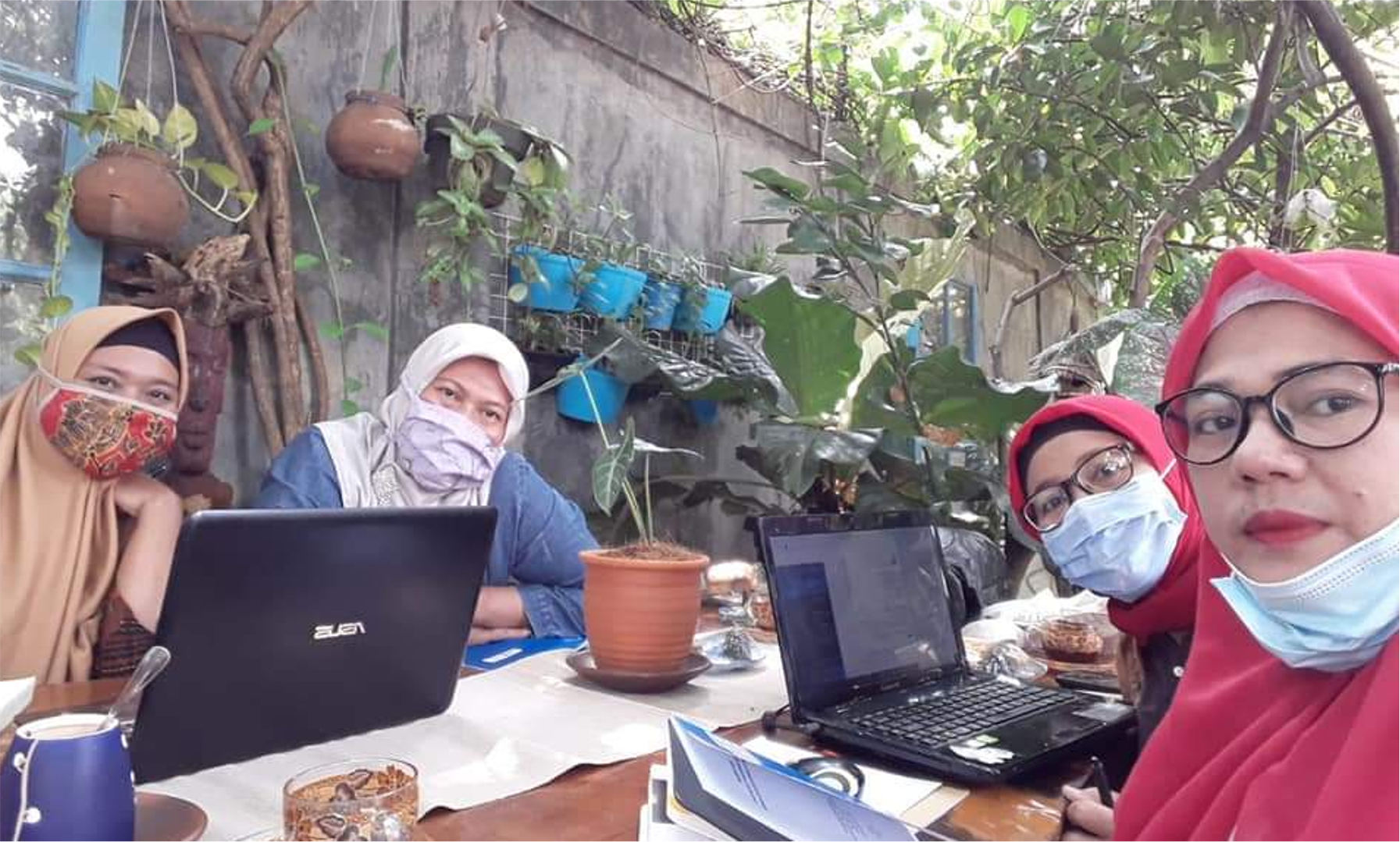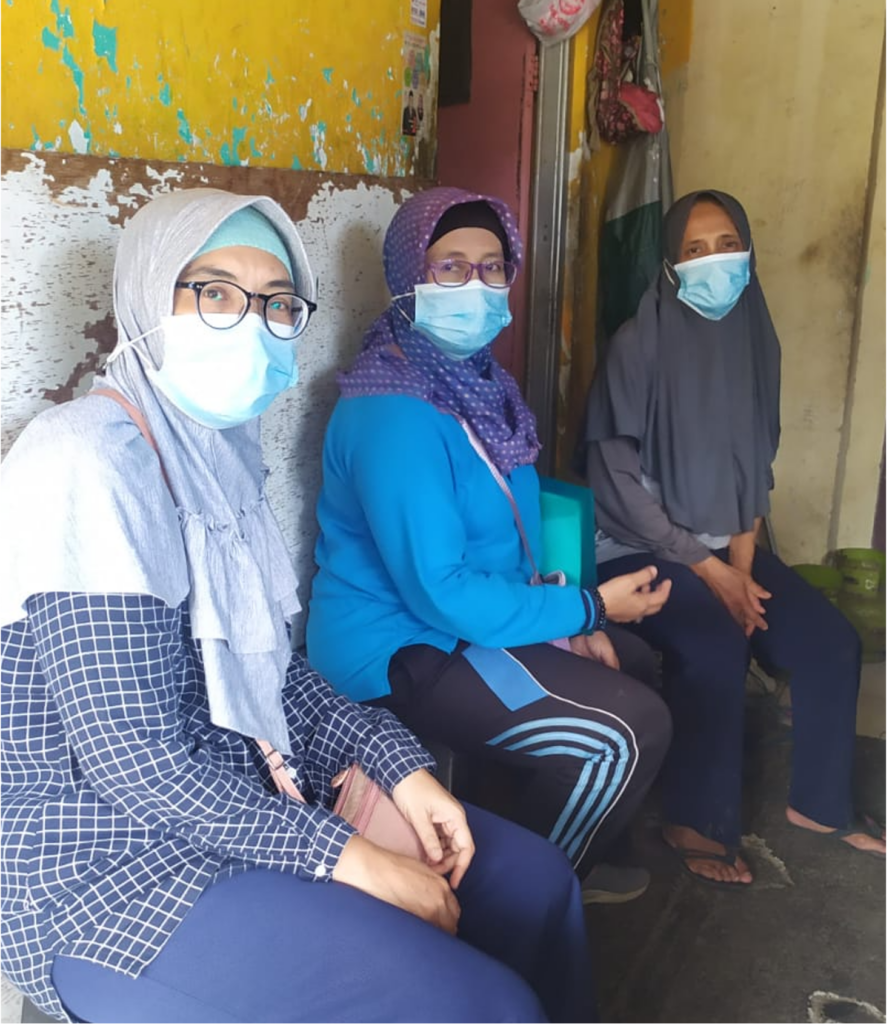Community Engagement in Early Warning/Early Action: Empatiku’s Approach to Preventing Violent Extremism

Jakarta, June 2025
Pondok Kacang Timur (PKT) is a village in Indonesia with a fairly active recitation group. There is a religious leader who is well known for giving religious lectures in the neighborhood. Unfortunately, every time she preaches and circulates her sermons through the WhatsApp Group, she always spreads negative propaganda against the government, blaming the government for being infidel, liberal, etc. This has made some people uncomfortable and disturbed, as the propaganda has created social divisions between those who are pro and those who are opposed. Following the hate speech, she invited people to join a ‘so-called’ better governance system under a khilafah—which is a political system led by a Caliph and guided by Islamic law.
In the past two decades, conflict in Indonesia has transformed from large-scale episodes of communal and separatist conflicts to more small-scale acts of violence, including violent extremism.¹ Between 2021 and 2022, Jakarta’s Center for Strategic and International Studies’ Collective Violence Early Warning (CVEW) dataset recorded 2,335 collective violence incidents which led to over 662 deaths, 2,918 injuries, and 724 instances of damaged or destroyed infrastructure.² If left unaddressed, even small-scale conflict events could escalate into larger, more lethal mass atrocity crimes.³ Indonesia faces numerous risk factors that could potentially lead to violent conflicts. These factors include the rise of intolerant acts against minority groups, the presence of extremist groups, and historical human rights abuses. Preventing the escalation of these risks as early as possible is critical to minimizing irreversible damage, including loss of life.
Violent conflict does not suddenly manifest within communities.
The government employs a monitoring system, which is generally slow to respond and thus delays action. The current system largely relies on open-source information regarding violent incidents from the news, which means that responses are implemented after a conflict event has already occurred. The existing system hardly contributes to preventive measures at early stages, and communities are minimally engaged by decision-makers, despite being at the forefront of conflict. Furthermore, there is no local mechanism through which communities can participate in early warning activities to inform timely atrocity prevention and early response. Violent conflict does not suddenly manifest within communities. Coordinated planning, the spreading of hate speech, and the build-up to violent events take place over time. The elongated period during which this happens allows early warning signs to emerge within the communities in which these activities are taking place. National interventions cannot always be implemented at a very local level, yet it is critical to capture EW signs at their inception to prevent harm to civilians.
While the current EW/EA system is centrally managed by the national and local governments, Empatiku is promoting another solution—an EW/EA application which is managed by local communities. The role of the local community as frontline responders is essential because they can more easily identify unrest and abnormalities and can thus respond in a timely manner before conflict escalates. This community-based system should shorten the decision-making process and speed up responses to early warning signs before they escalate. The civil society organization behind this application, Empatiku, has been working in Indonesia since 2015 to address the rise of violent extremism and ensure that civil society is involved in bringing about social change.4
This is something only a local EW/EA system is able to accomplish.
To support community decision-making processes, Empatiku is currently developing a digital EW/EA application. The utilization of information and communication technologies will support local communities to rapidly and easily document and monitor reported cases and obtain geospatial analytic reports that facilitate early response, coordination, collaboration, and communication. The role of technology in EW/EA is critical for mitigating and intervening in instances of violent conflict. The system allows community members to report early warning signs, including the identification of potentially vulnerable populations affected by conflict. Community members can input potential cases into the application. Alternatively, community leaders can collect the reports.
The Resilient Team will then manage and analyze the data to subsequently increase the effectiveness and efficiency of early action (EA) at the community level. The community-based EW/EA approach shifts agency to local communities, prioritizes community needs and accountability, and further enhances the understanding of the risks and EW indicators of violent conflict. This, therefore, improves community resiliency and conflict prevention outcomes. Furthermore, it will shorten the duration between reports of EW signs and EA, thus minimizing or even negating the harmful effects of violent conflict. This is something only a local EW/EA system is able to accomplish.


Back at the PKT village, the Resilient Team responded when the early case was reported. They discussed the case after having verified it and decided to personally approach the religious leader and communicate the residents’ concerns over the hate speech that has polarized the community. Even though she seemed to be listening and promised to change, unfortunately, she continued to spread the hate speech propaganda. The Resilient Team then referred the case to the chairman of the Mosque Welfare Council. The case was discussed, and the Mosque Welfare Council made the decision to temporarily prohibit the religious leader from preaching until she was willing to stop spreading hate speech. After several months of inactivity, the woman has finally changed.
Mira Kusumarini is the Founder and Director of EMPATIKU. She is also a member of the APL Steering Committee.
References:
- Patrick Barron, Sana Jaffrey, and Ashutosh Varshney, “How Large Conflicts Subside: Evidence from Indonesia,” Indonesian Development Paper, No. 18 (2014), 1
- Dr. Lina Alexandra and Alif Satria, “Policy Brief – Indonesia’s Collective Violence Trends in 2022: Less Common, More Lethal, Centre for Strategic and International Studies (CICS), February 2023, 2
- Gerry van Klinken, Communal Violence and Democratization in Indonesia: Small Town Wars, (New York: Taylor & Francis, 2007), 31; Nancy Lee Peluso, “Violence, Decentralization, and Resource Access in Indonesia,” Peace Review: A Journal of Social Justice, No. 19 (2007), 24-25; Patrick Barron, Sana Jaffrey, and Ashutosh Varshney, “When Large Conflicts Subside: The Ebbs and Flows of Violence in Post-Suharto Indonesia,” Journal of East Asian Studies, No. 16 (2016), 191- 192; Yuhki Tajima, The Institutional Origins of Communal Violence: Indonesia’s Transition from Authoritarian Rule, (New York: Cambridge University Press, 2014), 8-10; United Nations Office on Genocide Prevention and the Responsibility to Protect, Framework of Analysis for Atrocity Crimes: A Tool for Prevention, (New York: United Nations, 2014), 18
- Learn more at: https://empatiku.or.id/en/beranda/